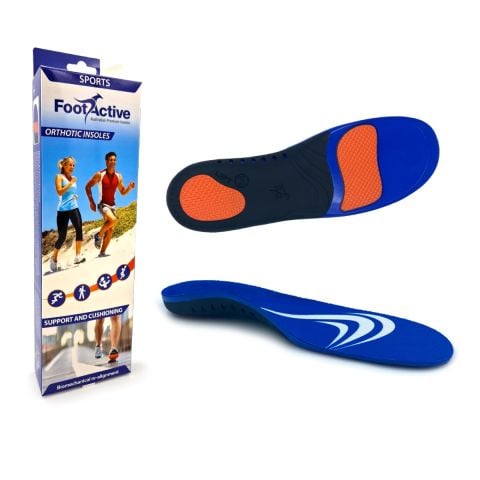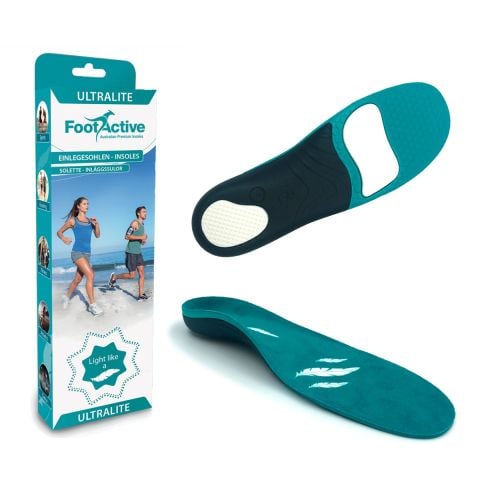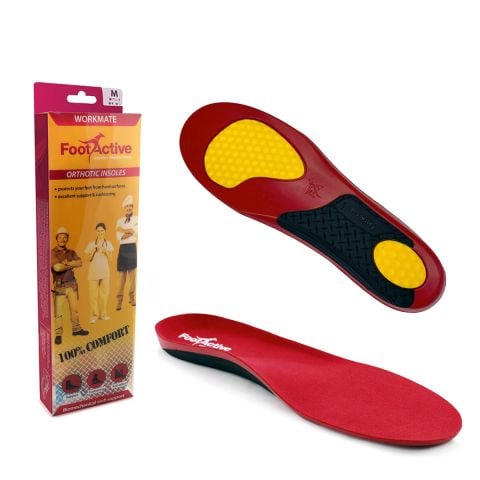What Causes Heel Spurs?
The heel spur will develop when excessive strain is placed on the Plantar Fascia tendon. Excessive strain can be caused by:
- Incorrect biomechanics
- Old age
- Being overweight
- Standing on hard surfaces
- Injury and other concerns such as arthritis
- Incorrect and unsuitable footwear
More often than not it is a combination of these factors which causes the heel spur to develop.
It is not the spur itself which causes the pain. It is just a sign of chronic inflammation in the connective soft tissues. The condition can be picked up on an x-ray and then heel spur treatment can begin quickly.
Heel Spur Treatment: How Can You Relieve Heel Spur Pain?
Calcium deposits that form heel spurs will not detach or decrease completely on their own. Heel spur treatment will be required to remove them completely. Surgery is rarely required as at-home treatments and easy measures can be introduced to reduce the symptoms.
Rest is the primary method for heel spur treatment. Simple cold compresses should also be applied after intense exercise or long days on your feet. Anti-inflammatory treatments, including creams and balms, can sooth the pain that begins to radiate between the heel and arch. Simple over-the-counter medications will also help if pain becomes too acute.
Specialist stretches and basic physiotherapy can also reduce the pain of heel spurs. The gentle exercises can be implemented into a routine after over-exercise or bouts of pain. Even the most effective stretches for heel spur treatment can be performed at home, including calf stretches and simple rolling.
Please note: Exercise will reduce the symptoms of heel spurs but not treat the actual cause.
The most common cause of the above issues is down to over-pronation. This is where the foot/ankle roll inwards therefore applying excessive pressure on the on the Plantar Fascia tendon. The best way to treat this is to wear orthotic insoles.
How Can FootActive Help?
FootActive orthotics are designed to support the arch of the foot and stabilise the heel therefore restoring the natural foot position. This reduces the strain and pressure on the Plantar Fascia and will therefore alleviate the pain! Get in touch with one of our experts, working with podiatrists and physiotherapists to ensure we are providing the best foot care.
FAQs
What does a heel spur feel like?
The inflammation caused by heel spurs can feel like a sharp, stabbing pain in the heel. The pain tends to be worse when you take your first few steps in the morning, or when you get up and walk after sitting down for a while. Generally, symptoms are less severe at other times of the day, but you may notice some pain after doing strenuous exercise or prolonged periods of walking/standing.
What does a heel spur look like?
Heel spurs are not usually visible on the surface of the skin, as they are not protrusions or bumps that you can typically feel or see. They are instead formed inside your foot and can’t be seen without having an X-ray.
On an X-ray, the appearance of a heel spur can vary in size and shape, but they often look like a hook or spike which faces the inside of the arch.
Do heel spurs go away on their own?
Heel spurs themselves don’t go away on their own, however the inflammation and pain caused can be treated using heel spur insoles and other treatments methods we discussed above.
As long as any pain is managed effectively with home treatments, there is rarely a need for surgery to remove the heel spur.
What’s the difference between heel spurs and Plantar Fasciitis?
Plantar Fasciitis isn’t the same as heel spurs, but many people confuse symptoms. Plantar Fasciitis is inflammation of the Plantar Fascia, often caused by a tear in muscle tissue, and can be extremely painful. A heel spur, on the other hand, is a calcium deposit, or bone spur.
Plantar Fasciitis can, however, be a cause for heel spurs, which is where the confusion typically lies.
What aggravates a heel spur?
Heel spurs can be aggravated by wearing shoes without arch support, and also by doing strenuous activities and/or being on your feet for long periods. Finding the best insoles for heel spurs is important for proper support and padding to the affected area.






